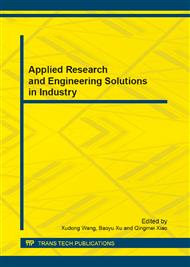p.593
p.597
p.603
p.607
p.611
p.615
p.620
p.625
p.631
Study of Plateau Lakes Chlorophyll-A Content Based on Remote Sensing Technology
Abstract:
Chlorophyll is an important parameter reflecting the degree of water eutrophication. Its extraction using remote sensing is an important way to monitor dynamic of water eutrophication. Since plateau lakes normally serous interfered by human activities, most of them belong to case II water. Their optical properties are very complicated, which increase the difficulty to its chlorophyll extracting. At present, the chlorophyll extraction using remote sensing has been achieved prominent advancement. But the extraction precision still needs to be further improved. And the universality and stability of extraction model needs to be further enhanced. The article results show that: the Images regional green color and the ground monitoring of chlorophyll concentration showed better relationship, but the image also reflects the effect of graded concentrations, this method can be used as remote monitoring of Diarchy Lake chlorophyll and mapping the quickest way.
Info:
Periodical:
Pages:
611-614
Citation:
Online since:
February 2013
Authors:
Price:
Сopyright:
© 2013 Trans Tech Publications Ltd. All Rights Reserved
Share:
Citation:


